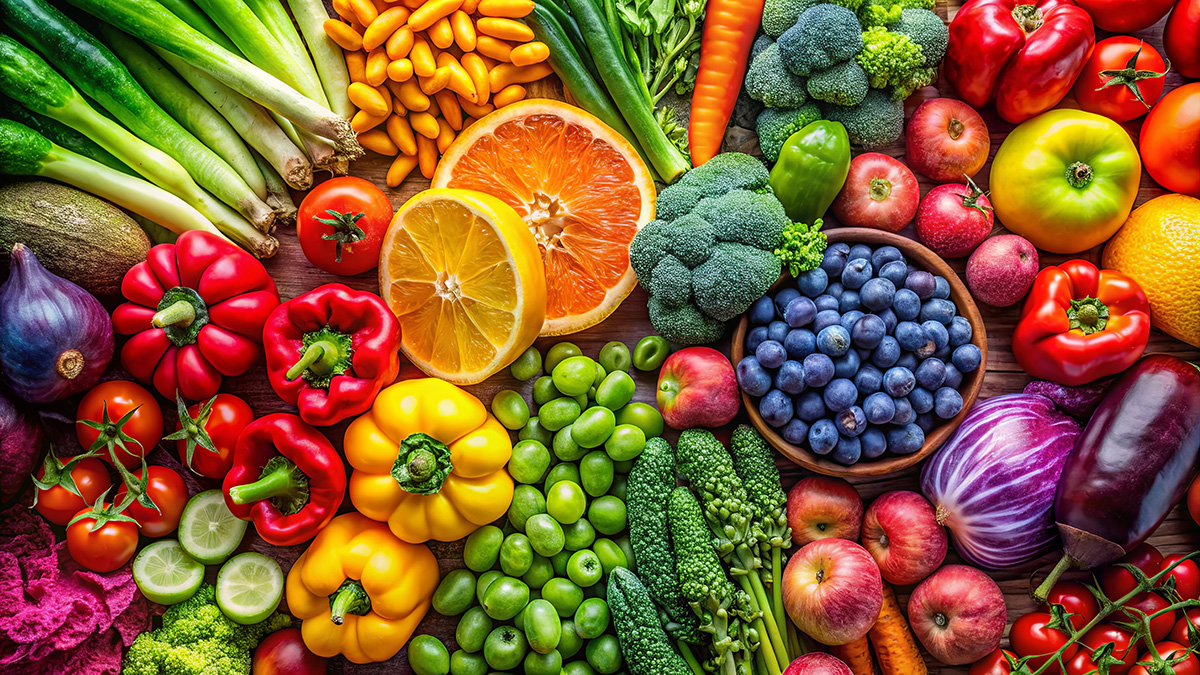
By Alyssa Havlovic, MS, RDN, ACSM EP-C, Extension Educator in Lancaster County
It’s no secret that fruits and vegetables are good for us. They're packed with essential vitamins, minerals, fiber and antioxidants that support overall health and help prevent chronic diseases. Yet, approximately 90% of Americans fall short of the recommended vegetable intake (3 cups/day) and 80% don’t eat enough fruit (2 cups/day), according to the Dietary Guidelines for Americans. The good news? Increasing your intake doesn’t require a complete diet overhaul — just a few small, consistent changes.
Here are some simple and realistic ways to incorporate more fruits and vegetables into your daily routine.
START YOUR DAY WITH PRODUCE
Breakfast is a great time to sneak in a serving of fruits or veggies. Try topping your cereal, oatmeal or yogurt with fresh berries or sliced bananas. If you prefer a more savory breakfast, consider adding spinach, tomatoes, peppers or mushrooms to scrambled eggs, a breakfast burrito or a breakfast sandwich. Smoothies are another excellent option — blend a handful of spinach or kale with fruit, yogurt and a splash of 100% juice or low-fat milk for a nutritious option.
SNACK SMARTER
Instead of reaching for chips or cookies between meals, keep cut-up vegetables and fruit readily available. Carrots, cucumber slices, cherry tomatoes and bell pepper strips are all easy to prep and store in the fridge. Pair them with hummus or a low-fat dressing for added flavor. Fresh fruit like apples, oranges or grapes also make quick and portable snacks.
FILL HALF YOUR PLATE WITH FRUITS AND VEGETABLES
When planning meals, aim to fill at least half your plate with fruits and vegetables. This not only boosts nutrition, but can also help with portion control and weight management. Roasted vegetables, steamed greens or colorful salads can be just as satisfying as heavier sides. Adding veggies to main dishes — like pasta, rice bowls or tacos — also helps increase intake without needing an entirely separate dish.
USE WHAT’S CONVENIENT
Eating more produce doesn’t mean you have to cook everything from scratch. Frozen and canned fruits and vegetables can be just as nutritious as fresh options — and they’re often more convenient and budget-friendly. Look for canned vegetables with low sodium and fruits packed in 100% juice. Frozen options are great for stir-fries, soups or smoothies and reduce food waste since they last longer.
GET CREATIVE IN THE KITCHEN
Think beyond the usual salads and sides. Add vegetables to sauces, soups and casseroles, or use them as a base for dishes. Cauliflower rice, zucchini noodles and lettuce wraps are great low-carb, veggie-forward alternatives. You can even bake with produce — zucchini bread or banana muffins can be a hit with both kids and adults.
SET YOURSELF UP FOR SUCCESS
The easier it is to grab a fruit or veggie, the more likely you’ll eat it. Wash and chop produce as soon as you bring it home so it’s ready when hunger strikes. Keep a bowl of fruit on the counter as a visual reminder. Try to include at least one fruit or vegetable at every meal and snack — remember small shifts in healthy habits add up over time.
Boosting your fruit and vegetable intake doesn’t require complicated recipes or drastic changes. With a few practical adjustments to your routine, you can easily meet your daily goals and enjoy the health benefits that come with it. Whether it’s tossing spinach into your smoothie or reaching for an apple instead of dessert, every small step counts.